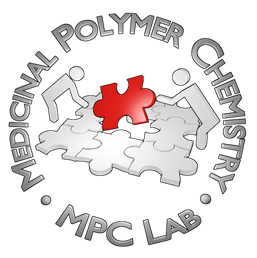…iofilms. The ADCs designed herein release the conjugated drug without cell entry, via a novel mechanism of drug release which likely involves an interaction of ADC with the thiols on the bacterial cell surface. ADCs targeted toward bacteria are superior by the afforded antimicrobial effects compared to the non-specific counterpart, in suspension and within biofilms, in vitro, and in an implant-associated murine osteomyelitis model in vivo. The res…
Search Results for: JN0-214 Latest Dumps Ppt 🕗 Free JN0-214 Practice Exams 📷 New JN0-214 Test Camp 🥼 Open website ( www.pdfvce.com ) and search for ⏩ JN0-214 ⏪ for free download 🍜JN0-214 Valid Exam Duration
…”Extended scaffold glucuronides: en route to the universal synthesis of O-aryl glucuronide prodrugs” Walther, Raoul; Jarlstad Olesen, Morten T.; Zelikin, Alexander N. Organic & Biomolecular Chemistry 2019, 17(29), 6970-6974…
…cal interconversion of enzymes and the corresponding zymogens through, for example, proteolytic processing or reversible phosphorylation, and affords on-demand activation of enzymes, controlled in space and/or time. In stark contrast, examples of chemical zymogens are very few, and in most cases these are based on the disulfide chemistry, which is largely indiscriminate to the nature of the activating thiol. In this work, we address an outstanding…
…ions, namely endocytosis, with excellence. Most importantly, these receptors are truly bio-orthogonal and thus afford a dedicated route of communication with the chemically engineered cells….
Our newest publication on utilizing self-immolative linker chemistry to construct antiviral macromolecular prodrugs has been published in Chemical Communications. abstract The release of azidothymidine from macromolecular prodrugs was designed to respond to the intracellular disulfide reshuffling. This drug has no thiol groups, and a response to this trigger was engineered using a self-immolative linker. The resulting formulations were fast-act…
…Together with a team of scientists from Zurich, Vienna, and Melbourne, we begin investigation of non-cryogenic methods to produce microstructured, functionalized physical hydrogels based on poly(vinyl alcohol). Our first data are published in Langmuir….
…of a self-immolative linker. Receptor activation ensues its head-to-tail decomposition and the release of a secondary messenger molecule into the internal volume of the synthetic cell. Transmembrane signaling is demonstrated in synthetic cells based on liposomes and mammalian cell-sized giant unilamellar vesicles and illustrates receptor performance in cell mimics with a diverse size and composition of the lipid bilayer. In giant unilamellar vesic…
…eby the separation of biochemical partners is essential to resolve their incompatibility, to enable transcription within the confines of a synthetic cell. The herein designed biochemical pathway and the engineered synthetic cells are arguably primitive compared to their natural counterpart. Nevertheless, our results present a significant step towards the design of synthetic cells with responsive behaviour, en route from abiotic to life-like cell m…
Signal transduction across biological membranes is among the most important evolutionary achievements. Herein, for the design of artificial cells, we engineer fully synthetic receptors with the capacity of transmembrane signaling, using tools of chemistry. Our receptors exhibit similarity with their natural counterparts in having an exofacial ligand for signal capture, being membrane anchored, and featuring a releasable messenger molecule that pe…
